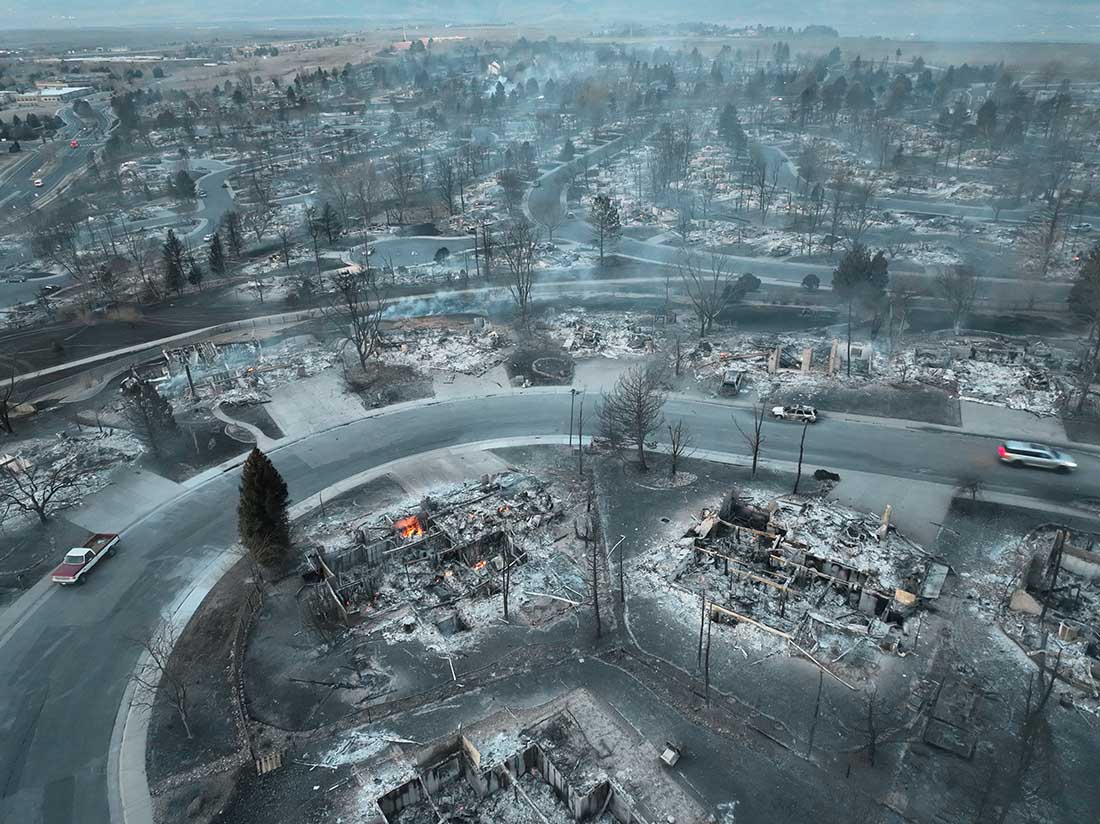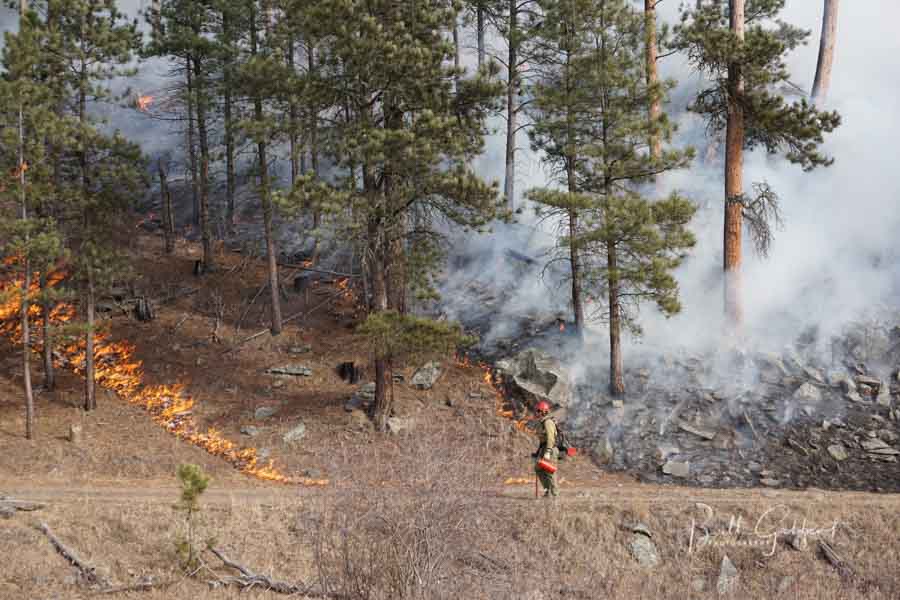
On Tuesday the U.S. Forest Service announced a 10-year strategy to address what they call the wildfire crisis which poses immediate threats to communities. The initiative, called “Confronting the Wildfire Crisis: A Strategy for Protecting Communities and Improving Resilience in America’s Forests,” combines the recent large investment funded by congress with years of research and planning into a national effort that is intended to significantly increase the scale of forest health treatments over the next decade.
The Forest Service will work with other federal agencies, including the Department of the Interior, and with Tribes, states, local communities, private landowners, and other partners to focus fuels and forest health treatments more strategically and at a larger scale.
Funding was approved in November
The Bipartisan Infrastructure bill signed by the President November 15, 2021 authorized about $2.42 billion for fiscal years 2022 through 2026 for fuels-related projects. (M = million)
- $100M, Pre-fire planning, and training personnel for wildland firefighting and vegetation treatments
- $20M, Data management for fuels projects and large fires
- $100M, Planning & implementing projects under the Collaborative Forest Landscape Restoration Program
- $500M, Mechanical thinning, timber harvesting, pre-commercial thinning
- $500M, Wildfire defense grants for at risk communities
- $500M, Prescribed fires
- $500M, Constructing fuelbreaks
- $200M, Remove fuels, produce biochar and other innovative wood products
Previous testimony about fuel management before congressional committees
During testimony June 17, 2021 before the Senate Committee on Energy and Natural Resources former US Forest Service Chief Vicki Christiansen said the agency treats fuels on about three million acres each year but said they need to treat two to four times that amount. She repeatedly called for a “paradigm shift” for treating hazardous fuels. Senator Ron Wyden (OR) got Ms. Christiansen to confirm that the agency’s latest estimate is that it would take $20 billion over a 10-year period to “get in front of the hazardous fuel challenge”.
On September 29, 2021 in a hearing before the House of Representatives Agriculture Committee’s Subcommittee on Conservation and Forestry, new USFS Chief Randy Moore said, “We will never hire enough firefighters, we will never buy enough engines or aircraft to fight these fires. We must actively treat forests. That’s what it takes to turn this situation around. We must shift from small scale treatments to strategic science-based treatments across boundaries. It must start with those places most critically at risk. We must treat 20 million acres over 10 years. Done right in the right places, treatments make a difference.”
On October 27, 2021 Jaelith Hall-Rivera, Deputy Forest Service Chief for State and Private Forestry told the House of Representatives’ Subcommittee on Natural Resources, “We need to treat an additional 20 million acres over the next decade and that could cost up to $20 billion or more.”
What is now planned
The plan released Tuesday by the Forest Service calls for:
- Treating up to an additional 20 million acres on the National Forest System lands in the West, over and above current treatment levels;
- Treating up to an additional 30 million acres on other Federal, State, Tribal, and private lands in the West;
The current level of treatment in recent years has been 2-3 million acres per year for fuels and forest health, the new document stated.
The plan calls for an unprecedented “paradigm shift” in land management to increase fuels and forest health treatments across jurisdictions to match the actual scale of wildfire risk to people, communities, and natural resources, especially in the Western United States.
The Forest Service is developing staffing plans and will be increasing capacity in not only field personnel specializing in prescribed fire to complete the work but also key administrative positions like contracting officers, human resources professionals, collaboration and partnership coordinators, communications, and grants and agreements specialists who will assist in connecting with partners.

In 2022 and 2023
During the first two years of the initiative, the agency will be looking for large landscape-scale projects that are ready to go, up until now lacking only the necessary funding.
They will be seeking projects that are:
- Designed to reduce wildfire risk to communities, water supplies, or critical infrastructure (including utility lines, roads, and national security sites);
- Critical ecological values (including watersheds, wildlife habitat, and old growth stands) and ecosystem services (including carbon storage);
- Economic values (including outdoor recreation, timber, and grazing areas);
- Areas of cultural and historic significance (including areas important to Tribes); and,
- Areas of social importance to communities (including for access and subsistence use).
Reforestation
The new initiative also strives for increased rates of reforestation following forest fires.
“We currently address only 6 percent of post-wildfire replanting needs per year, resulting in a rapidly expanding list of reforestation needs,” the new plan states. “We have plans for the reforestation of more than 1.3 million acres of National Forest System land. However, these plans only address one-third of National Forest System reforestation needs, estimated to be 4 million acres and growing. As we work to recover from wildfire, we are emphasizing planting the right species, in the right place, under the right conditions, so forests will remain healthy and resilient over time.”
Our take
The testimony before congressional committees said that in order to “get in front of the hazardous fuel challenge” and “turn this situation around” the Forest Service needs an additional $2 billion a year for the next 10 years, over and above what is currently being spent. What was appropriated for the next five years was about $0.48 billion per year, less than one-fourth of the additional funds the agency said was needed.
The growth of the climate crisis which has contributed to the “wildfire crisis” appears to be exceeding the estimates of scientists. Changes are occurring even more quickly than previously expected. So low-balling the funding for protecting our homeland will mean we will fall even further behind in treating fuels and attempting to keep fires from wiping out more communities.
The heads of the five federal land management agencies need to be honest with congress and continue to point out the scope of the fuels problem and the increasing risk of fiddling while the forests and subdivisions burn. Congress must accept the facts and pass legislation adequate to address the threats to our ecosystems and communities.







